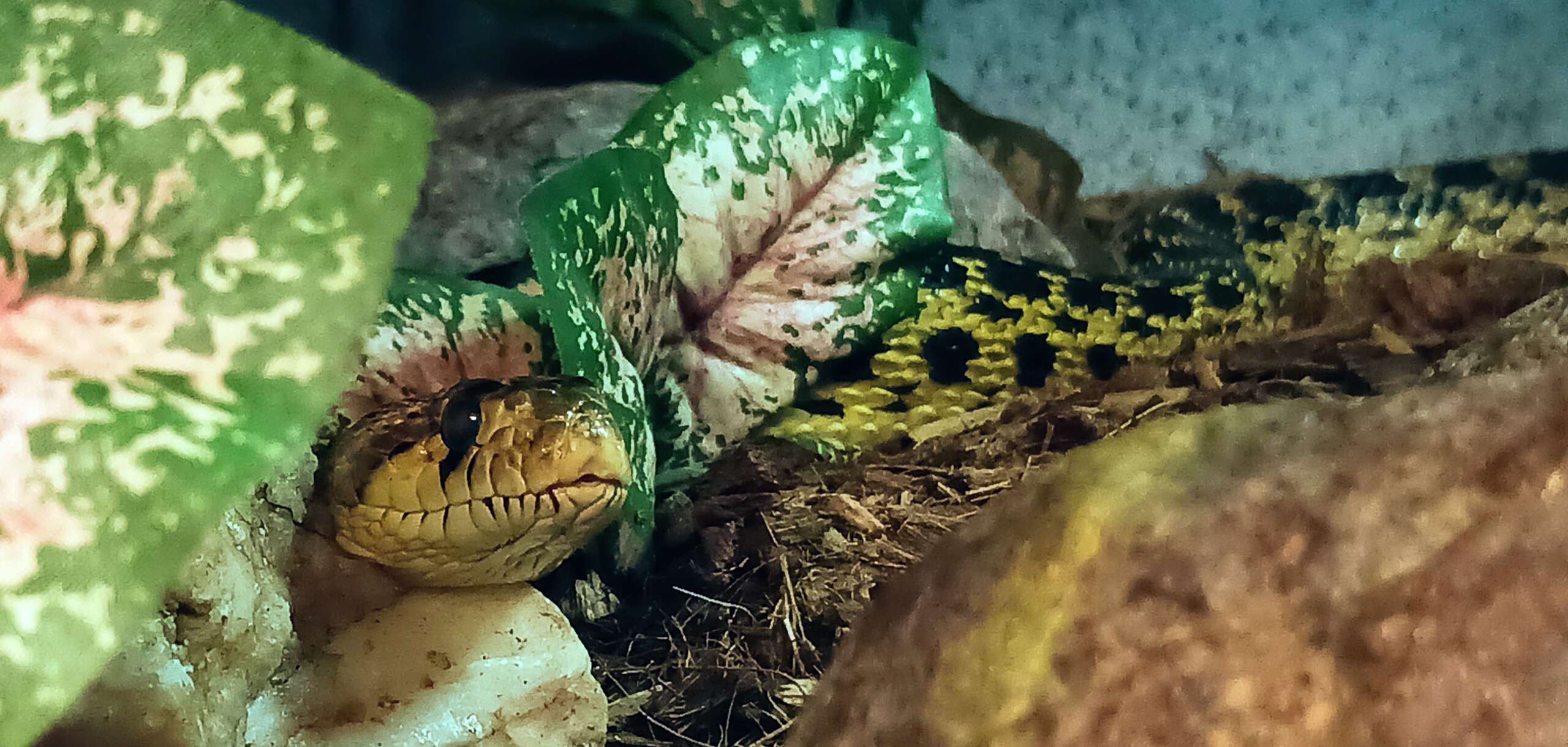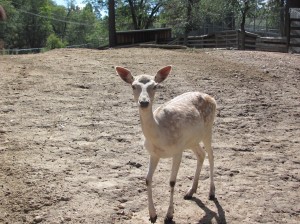Gopher Snake at the Zoo:
Dougie
Description
Large and heavy-bodied snake which can reach 9 feet in length, but 4 feet is much more common. On its back are 33 to 66 light to dark brown or reddish blotches.
What do they eat?
Small mammals, birds, lizards, smaller snakes, insects, and eggs. Prey varies regionally but the primary prey in all areas are rodents and other small mammals. In some areas they prey mainly on gophers, which is why they are called “gopher snakes.” Gopher snakes actively search for prey in their burrows and hiding places. They often follow small mammal runways, and are quite successful in capturing voles, western harvest mice, Peromyscus species, kangaroo rats, ground squirrels, and young rabbits.
How long do they live?
12 to 15 years
How many are born at a time?
2 to 24
Where can they be found?
Throughout Mexico, the Southern and Western United States and Western Canada. woodlands, deserts, agricultural areas, prairies, chaparral, and shrublands.
Interesting facts
Nonvenomous colubrid snakes commonly referred to as gopher snakes, pine snakes, and bullsnakes. All species of Pituophis are large and powerfully built. The head is relatively small in proportion to the body and it is only slightly distinct from the neck. When a stream of air is forced from the trachea, the epiglottis vibrates, thereby producing the peculiarly loud, hoarse hissing for which they are well known. Gopher snakes are sometimes mistaken for rattlesnakes because of their size, coloration, and habit of wiggling their tail when they feel threatened. Color patterns vary regionally and often mimic the colors of the dominant cover vegetation in a region. Superficially, gopher snakes resemble many species of rattlesnakes and are often mistaken for them. Gopher snakes are not venomous and do not have rattles on the end of their tail. They also behaviorally mimic rattlesnakes by coiling, raising their heads, and rapidly shaking their tails when threatened by a predator or unsuspecting human. Their rattlesnake mimicry can be very convincing and many gopher snakes are killed as rattlesnakes. Non-human predators are likely to be discouraged from attacking gopher snakes when they are mimicing rattlesnakes. but can be easily distinguished from a rattlesnake by the lack of black and white banding on its tail and by the shape of its head, which is narrower than a rattlesnake’s.



